One of the most iconic musicals was filmed in this picturesque Central European city that's also the birthplace of Wolfgang Amadeus Mozart.
Salzburg, Austria, looks and feels like something out of a storybook. With the Salzach River flowing gently through the city, awe-inspiring mountain ranges frame the fairytale landscape. Much of its charm comes from buildings and streets constructed over 1,000 years ago that have remained largely intact with their original integrity.
The Sound of Music was born from its rolling green hills and piercing beauty, with several stand-out Salzburg attractions sprinkled through the blockbuster film, which turns 60 this year.
The city lies east of Vienna on the German border, with a population of just over 150,000. Vienna, in contrast, is a sprawling metropolis with over two-and-a-half million residents.
Luckily for visitors, Salzburg makes an ideal day trip from Vienna, meaning you don't have to book an overnight or two to get a taste of the city. I opted to spend a night, providing time to enjoy a leisurely dinner and see the magic of a truly incomparable city come alive after dark.
How do you get to Salzburg?
Salzburg is easily accessible by train, particularly if you are arriving from a German or Austrian city.
The Westbahn is described as "Europe's most advanced and comfortable train fleet," and moves quickly between the Austrian capital and several other city centres. It takes about three hours to reach Salzburg, and you can easily stow your luggage and enjoy a coffee on board.
Travellers should always purchase tickets for trains in advance. While it may be tempting to firm up plans at your destination, popular routes book up quickly (as I discovered with some other forms of transportation, even booking before I departed on my trip). For instance, seats on the hugely popular double-decker Flixbus service sell out quickly, even ahead of the summer rush.
Should I buy a Salzburg Card?
I wish I had more time to spend in Salzburg. Despite being a smaller city, it has a rich, multifaceted history and countless things to see and do. If you plan on uncovering all of the city's secrets and visiting the top sights, a will save you money.
Not only does the card include free admission to over 20 attractions and museums, but it also has free public transportation (except s-railways / S-Bahn). Card-holders also enjoy discounts on select cultural events, concerts, and many excursion destinations. They may also have access to an "express entrance" without having to stand in line at the ticket window.
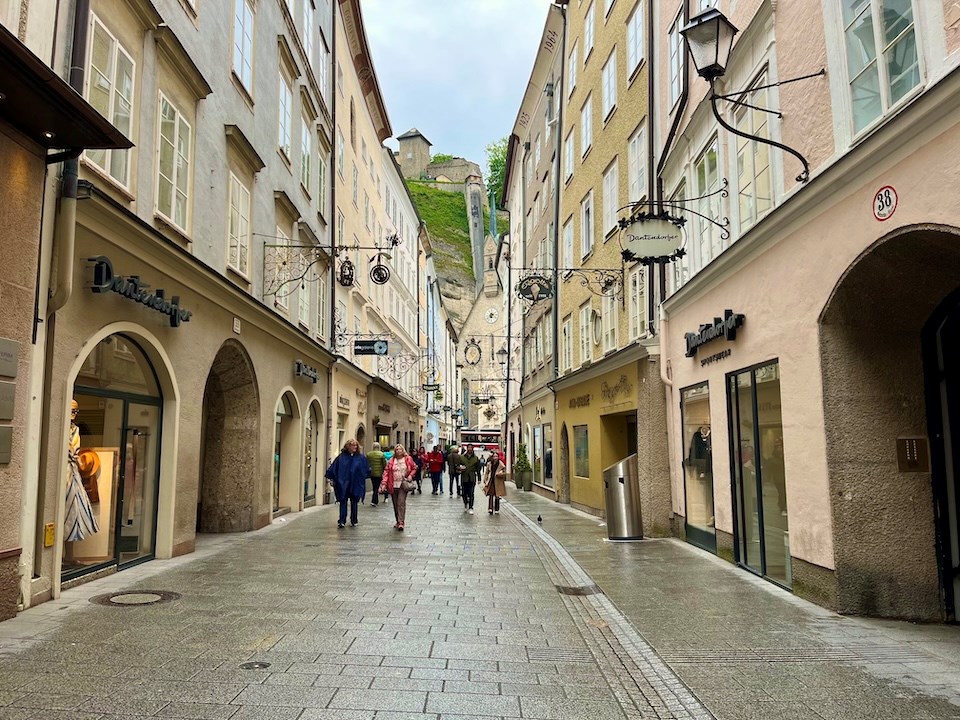
Purchase the before your visit. They come in 24, 48, and 72-hour options, with the cheapest option starting at €36 during peak season. If you prefer, you can also get the physical card at your hotel reception (it looks like a bank card). This way, you don't have to pull up the digital copy on your phone (but make sure you don't lose it).
Private tours
If you are in a small group or with your family, a private tour is an ideal way to ensure you get to learn more about specific highlights. With a larger group or a set tour, there's typically very little or no room for deviations from the itinerary.
I was surprised and delighted when my guide, , started our tour by asking me exactly what I wanted to see. Mozart's birthplace was the top of my list, but we tackled several city highlights and historical points of interest on the way to his apartment and afterwards.
The Salzberg expert also hosts a special tour specifically for fans, meaning you can explore every scene in the film, snap cinematic photos, and maybe sing a little as you skip through the streets.
Mirabell Palace and Garden
Salzburg's walkability is striking. You can visit numerous (unrelated) places of historical significance within a few hours. For example, we started the tour at my accommodation, the , located directly by the Mirabell Palace and its stunning garden. We walked from the hotel to the palace area and discussed some of the history, including the changing of royal hands, which includes immense wealth and prestige, scandal, art, and love.
The striking has stately vistas from the steps overlooking the manicured grand gardens outside the palace.
Salzburg's historically significant city centre
In 1996, the UNESCO World Heritage Centre designated a site of historical significance for its baroque architecture at a time of pivotal exchanges between the Italian and German cultures. Important city structures were designed by Italian architects Vincenzo Scamozzi and Santino Solari. Additionally, the city is surrounded by striking mountain ranges, dominated by the fortress of HohenSalzburg.
Salzburg also received the nod from UNESCO for its association with numerous important artists and musicians, notably Mozart.
Where to shop
Mozart's birthplace is located on Getreidegasse, the busy shopping street situated in Salzburg's historic city centre. The historic street is clad with wrought-iron signage dating back to the Middle Ages. Muhr explained that a primarily illiterate population followed pictures on signs to know what was in the shops. Today, many of the signs hearken to their historical legacy, with symbols or other physical representations of the goods inside. For example, the historic umbrella shop, , has a wrought-iron umbrella dangling from its striking gold-appointed sign.
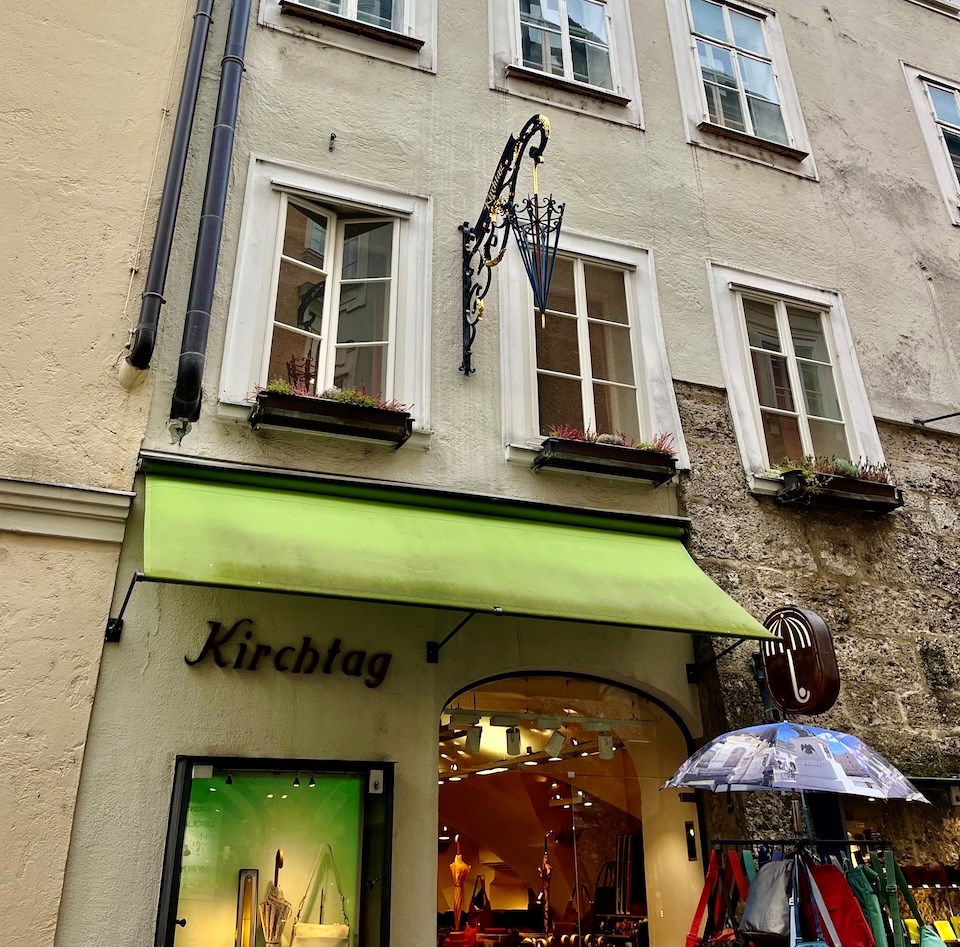
All stores on the Getreidegasse must have a wrought-iron sign, regardless of the retailer. This means modern big-name brands must use the old style to direct customers inside, too.
The "official" Mozart chocolates were created in 1890 by Salzburg confectioner Paul Fürst. Today, is Austria's only confectionery using the traditional recipe (this is a must-try in Salzburg). The Salzburg chocolates have a more complex flavour (including pistachio), and the chocolate is of better quality. Muhr treated me to one of them, describing how the chocolatier fills the treat and then closes it with a chocolate drop (you can see the "bump" on the end of each one).
Mozart's birthplace
The musical genius's birthplace is in a multi-family apartment building called in No. 9 Getreidegasse. Back then, his family didn't own the building. As a family of lower wealth, they were located on a higher floor (that's how it worked in those days). The higher up the building you were, the lower the ceiling was. In other words, you may need to duck a bit going through Mozart's doorways. Now, the bright-yellow building is rightfully adorned with his name: Mozarts Geburtshaus.
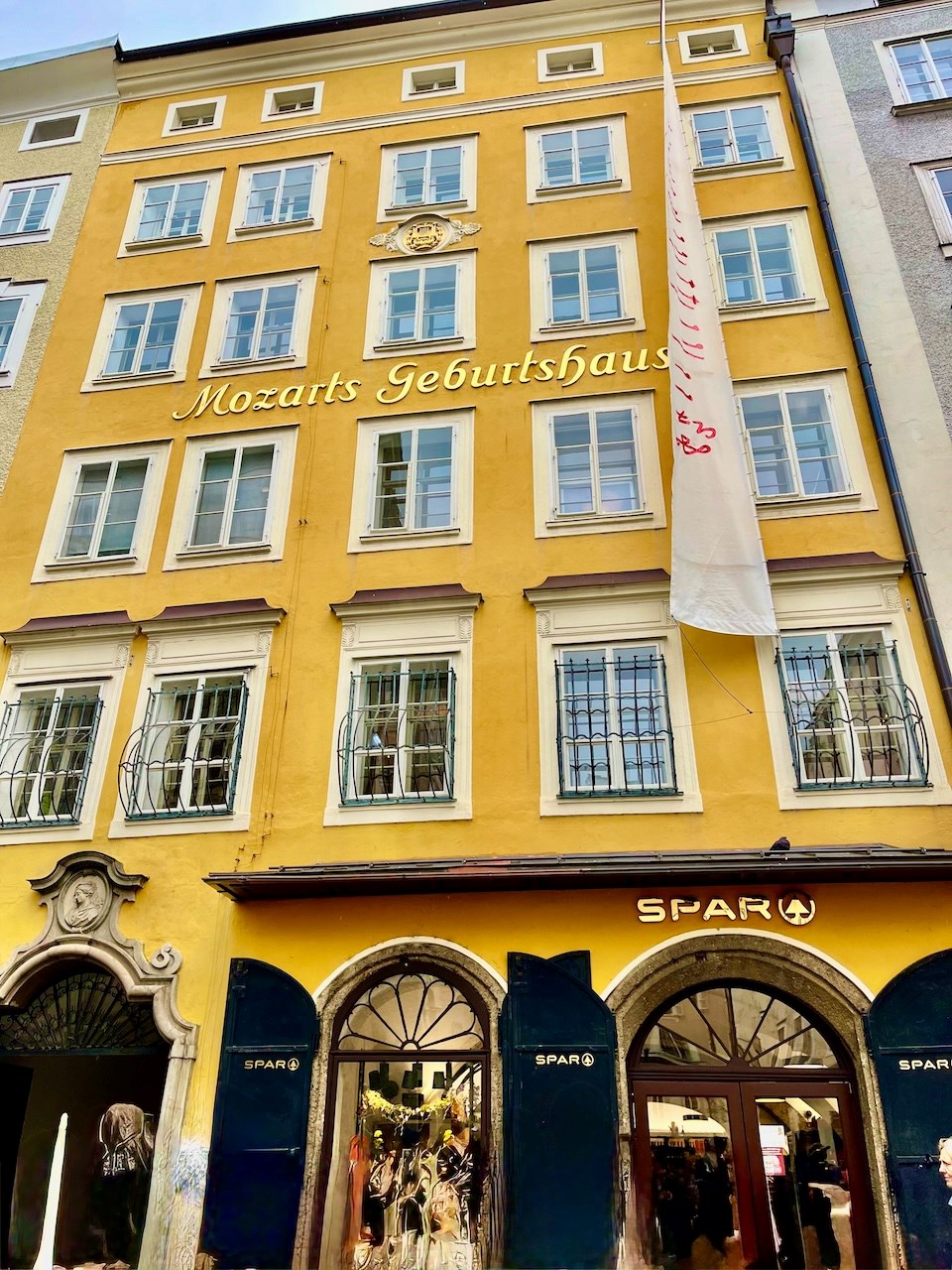
Muhr guided me through the apartment, starting with a journey through the building owned by the Hagenauer family, who lived on the bottom floor (they were wealthy spice merchants). The lowest floor has a large living area with a piano, where they now hold some concerts. To get to Mozart's living quarters, we journeyed up some stairs and into a now-open space with several cases holding relics of the composer's family life, with everything from sheet music, jewellery, photographs, instruments, books, and paintings of various individuals.
The journey through Mozart's apartment includes information about his entire family, including his wife, who survived him and married one of his greatest admirers. His widow, Constance, and new husband, Georg Nikolaus von Nissen, co-authored a book about the composer.
Other attractions to see
Salzburg has several other attractions and activities for visitors looking to discover other options outside of Mozart and The Sound of Music.
The , built in 1913, is one of the world's oldest. It is a great stop for families or people looking to visit this historic relic.
The offers classes for tourists who want to learn how to make traditional Salzburger Nockerl, apple strudel, goulash, or other dishes.
Many visitors rent to journey through the city, enjoying the stunning vistas and making stops along the way.
, the Salzburg Castle, offers spellbinding views of the city from the southern side of the , and is considered a top attraction.
The was first recorded in 774, but was reconstructed following fires and other damage. It reopened in 1200, although several more fires damaged the structure. Today, it stands as a striking domed structure in Domplatz, "Cathedral Square."
, also known as the "heart of Salzburg," has an impossible-to-miss memorial to its namesake, unveiled in 1842.
Salzburg is also home to , including ones dedicated to Mozart, aviation, folklore, the Red Cross, venomous animals, and many others.
Where to stay
I stayed at the four-star , only 10 minutes from Salzburg's Old Town. It is located in the former palais of Archbishop Paris Londron and was built in 1653.
Prices start around €157 and go up to roughly €269 for select family rooms.
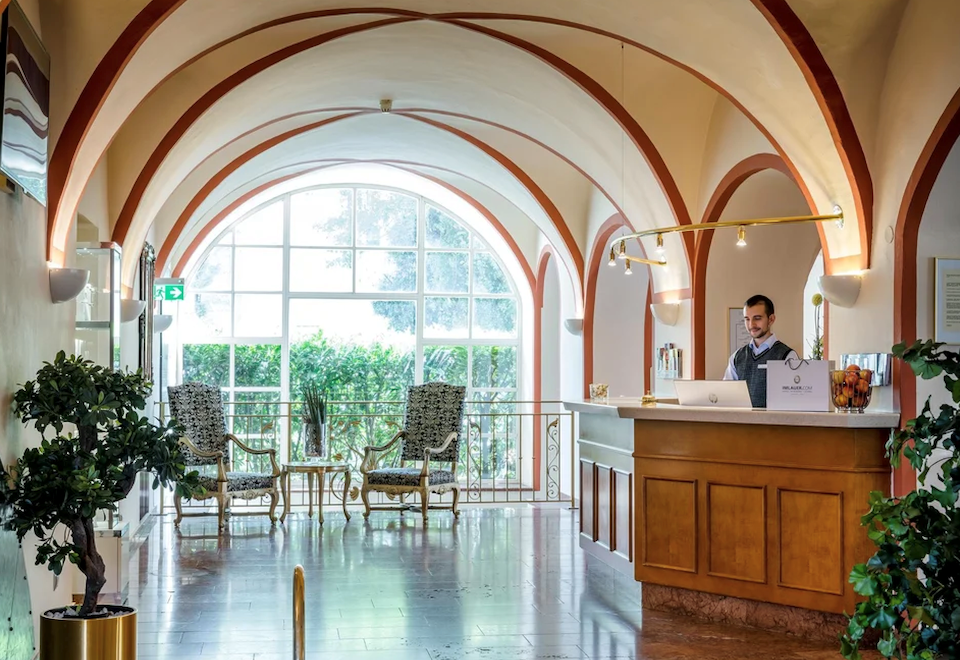
My stay included a buffet breakfast, cookies in the room, and warm staff, available 24/7 at the reception. Some of the staff even dressed up in traditional Austrian attire, creating a nostalgic atmosphere.
The main draw of the accommodation is the location, with easy access to top attractions and places to eat, drink, and shop.
Sternbräu: Dine, drink, make friends, and more
has served customers traditional Austrian fare since 1542 and is the largest tavern in the city with eleven "venues." Nine of 11 venues in the tavern are barrier-free, and there are also three outdoor, sprawling pub gardens. With an impressive 1,300 indoor and outdoor seats, it is also one of the largest venues of its kind in Austria.
Despite its massive size, Sternbräu has several cozy areas featuring warm, yellow lighting and impressive artwork. I dined in the Bürgersaal, a 97-seat section on the ground level complete with the "mystical-dark" pieces by the Austrian painter Karl Reisenbichler. With a striking wooden ceiling and rich brown and red hues, enjoying a meal in the room feels like dining at a medieval knight's table. I enjoyed a bratwurst with potatoes and finished the meal off with a decadent Sacher torte (this is the classic dessert to eat in Austria).
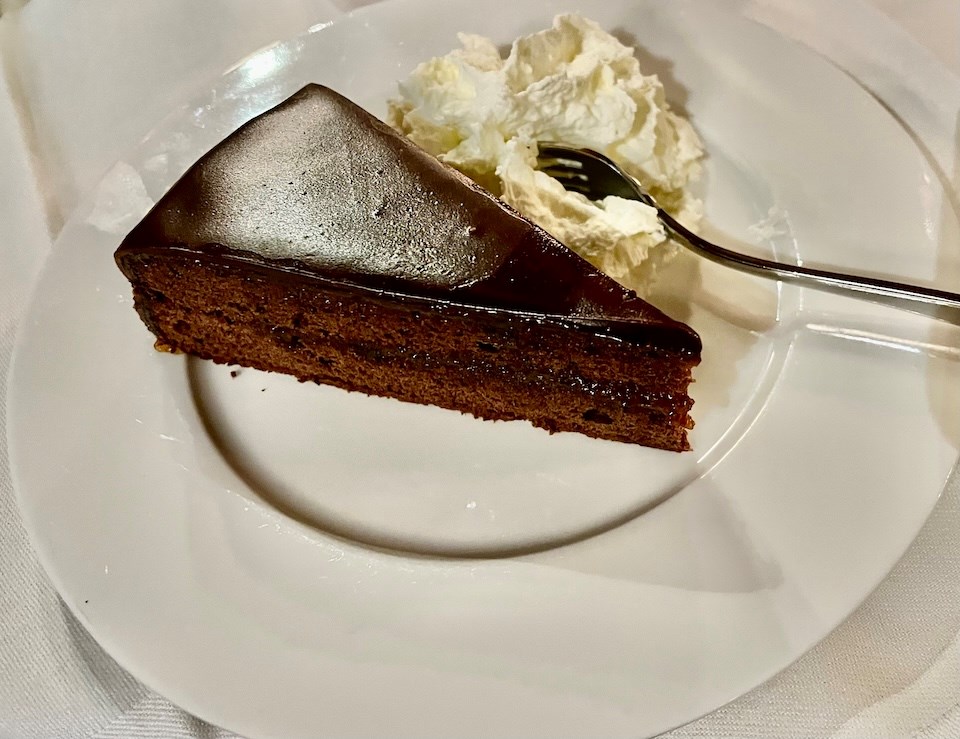
But this isn't the only atmosphere you can enjoy at the tavern. For instance, the 67-seat SternLounge (also located on the ground level) feels like a completely different establishment, with a modern layout and purplish-blue lighting artfully glowing beneath the bar and around the perimeter of the room.
The 87-seat Braumeisterstube beer lounge and the 64-seat SternZeit restaurant are also located on the ground level.
Moving upwards, guests can see performances by the Salzburg theatre group “caravan” in the multi-functional Festungssaal dining hall or catch the "Jazz & the City" festival in the establishment's largest space, SternGalerie, with 120 seats.
Other spaces include the small outdoor atrium with 24 seats, and the three outdoor pub gardens (the largest boasts 416 seats).
Pubs and restaurants galore
Hungry tourists won't run out of places to dine or wet their whistles.
After arriving from Vienna, I checked into the hotel and asked the hotel staff where I could get a meal nearby. They suggested , located only a few minutes walk from the hotel. The pub is considered a famous old-world drinking den, complete with all-wood everything and a fox theme on its menus.
Many places in Salzburg are named after animals, including the aforementioned and (Elephant Inn), located on a side street off the famous Getreidegasse.
, translating to "The Happy Ape" or "The Merry Monkey," is a popular gasthaus (German for guesthouse) serving casual drinks and traditional Austrian cuisine.
If you are looking to eat in a truly historic, upscale spot, the opened in 803, and is Europe's oldest restaurant. It serves Austrian-Mediterranean cuisine and is a feast for the eyes as much as the stomach. While I didn't dine there, I peeked inside to check out the decor, including various brightly-coloured artwork, furniture, and unique decorations (I was surprised to see a jungle theme running throughout the restaurant, including palms). It is also built into the rock face of the , which you can see throughout parts of the restaurant. It is divided into several areas, including more stately spaces for large receptions and rooms with low ceilings, creating a cozy atmosphere (they are built directly into the mountain).
Nightlife in a small city
Salzburg's nightlife, albeit small, is mighty.
Juxtapose the massive techno dance parties in German clubs considered exclusive and "small" like , with a capacity of 1,500, to what is considered a larger after-dark spot in Salzburg. You'd be lucky to see over 200 people, and even that is stretching quite high (I'm excluding the anomaly , which is more like 11 restaurants/bars in one). I did a mini bar crawl after dinner (well, it was more like me moving from pub to pub in search of an elusive larger show of revellers). Since it was a Wednesday night, I wasn't expecting massive hump day crowds to emerge. The weather wasn't exactly screaming summer fun, with gentle drizzle morphing into pretty miserable rainfall.
But Salzburg's after-dark charm is more about mid to pint-sized (pardon the pun) clubs, pubs, and drinking holes for people to gather in intimate atmospheres. Locals are extremely friendly, and you can enjoy a drink and chat with new friends in several places located in the Altstadt (Old Town) district.
Say "hi" to Max tending bar at the , and wait for a small but joyful crowd to dance with reckless abandon. If you're feeling Irish in Austria, is located right next door, offering a more laid-back atmosphere with food (you can even order a pizza to take back to your hotel). The bar is staffed with several high-energy people, and you might hear some live music.
This is just a taste of the options, but visitors looking for a bird's-eye view of the Salzburg scene can check out the . Located between the Congress Center and the Mirabell Gardens, guests have a sweeping view of the picturesque city.
Thanks to and the for facilitating a portion of the meals and activities mentioned above. All opinions and inclusions are those of the author and were based solely on personal experience. None of the businesses or entities featured were granted any previews of the story before publication or paid to be mentioned.
Find more information about exciting destinations in B.C. and across the globe, as well as travel deals and tips, by signing up for V.I.A.'s weekly travel newsletter The Wanderer. Since travel deals can sell out, find out the day they are posted by signing up for our daily Travel Deals newsletter.
Want to learn more about a specific destination or have a travel concern or idea you would like V.I.A. to write about? Email us at [email protected]. Send us stories about recent holidays that you've been on, or if you have any tips you think our readers should know about.



